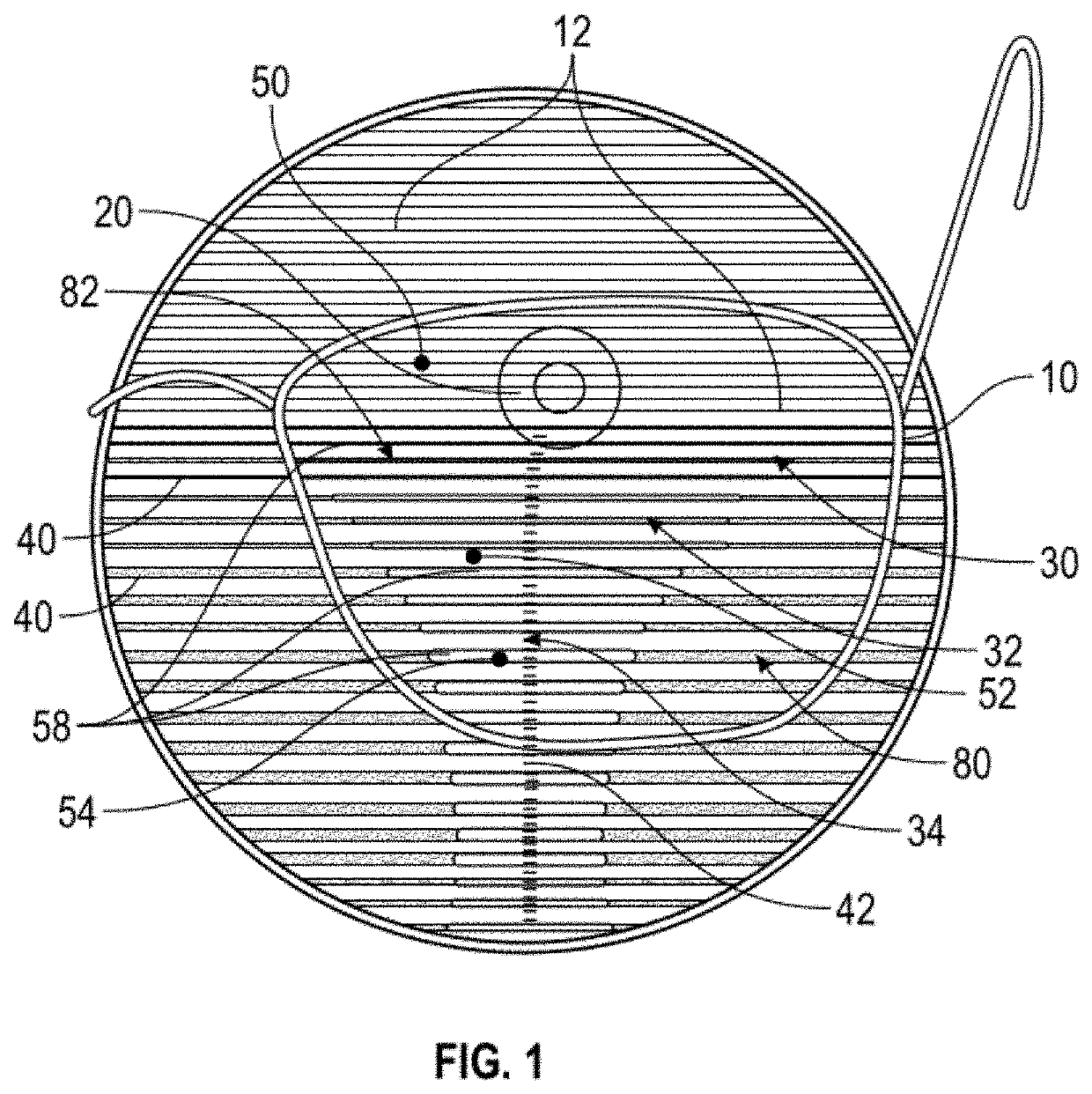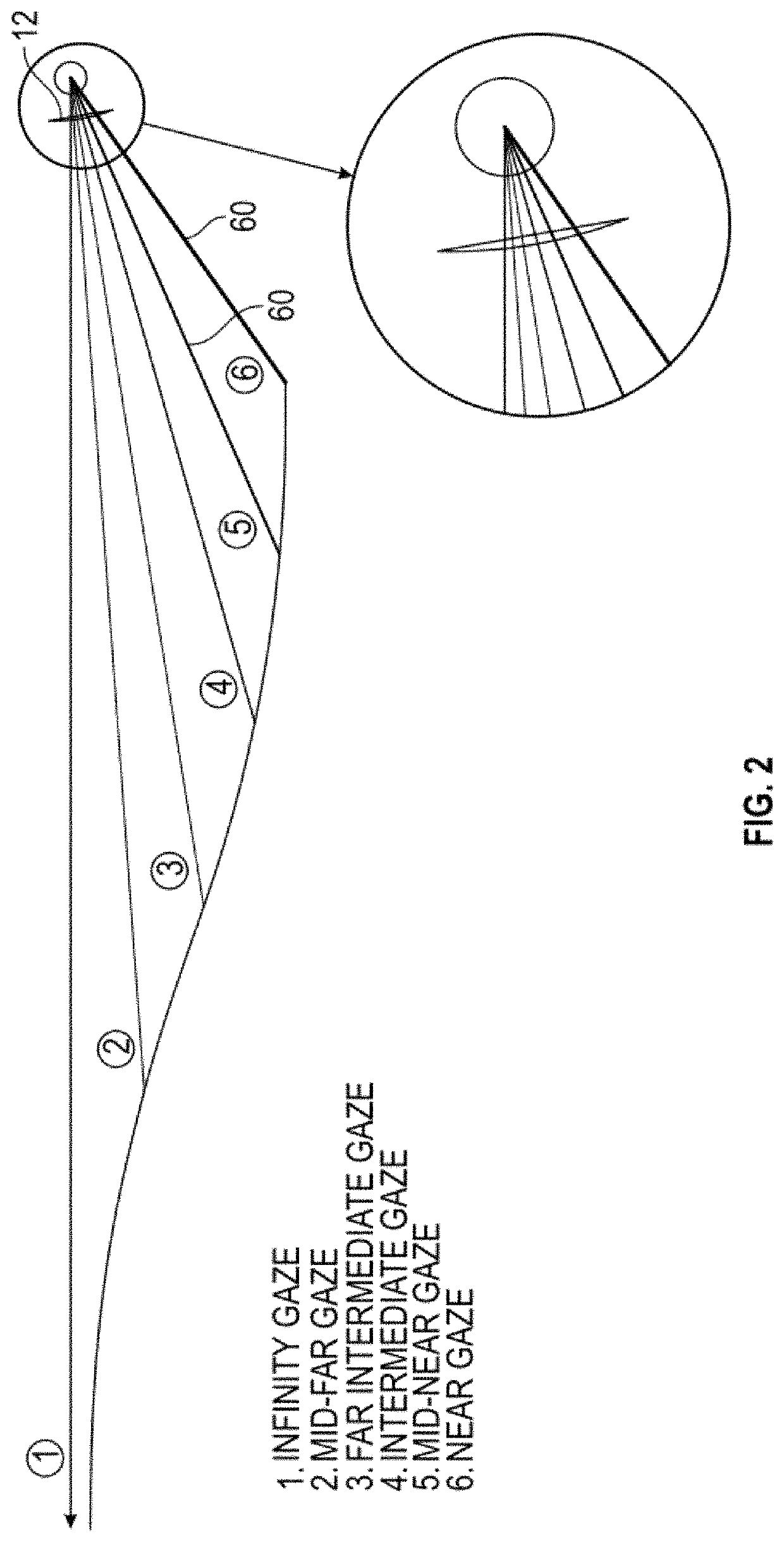Broadview natural addition lens
a natural addition and lens technology, applied in the field of ophthalmic lenses, can solve the problems of insufficient change of shape of lens and capsule, inability to adjust the shape of lens, and drawbacks of existing designs, and achieve the effect of mitigate the effect of presbyopia
- Summary
- Abstract
- Description
- Claims
- Application Information
AI Technical Summary
Benefits of technology
Problems solved by technology
Method used
Image
Examples
Embodiment Construction
[0025]Reference will now be made in detail to an exemplary embodiment of the invention, which is illustrated in the accompanying drawings.
[0026]FIG. 1 depicts in a schematic a lens 12, according to an exemplary embodiment, as fit in a typical frame 10. A user's eye 20 is depicted in a position that typifies conventional frame fitting. Areas 30, 32, 34 on the lens include horizontal meridians 40 of differing optical power that extend from end to end across each area. Thus, at each of the meridians 40 the lens 12 has a different curvature to provide a different plus power. The meridians 40 are arranged crosswise along a generally vertical focal length deceleration curve 42 that connects the areas 30, 32, 34. The areas 30, 32, 34 are identified for viewing distant objects 50, intermediate objects 52, and near objects 54. Bars 58 have varying thicknesses that show (in approximate, relative terms) varying magnification of uniform horizontal lines when viewed through different parts of th...
PUM
 Login to View More
Login to View More Abstract
Description
Claims
Application Information
 Login to View More
Login to View More - R&D
- Intellectual Property
- Life Sciences
- Materials
- Tech Scout
- Unparalleled Data Quality
- Higher Quality Content
- 60% Fewer Hallucinations
Browse by: Latest US Patents, China's latest patents, Technical Efficacy Thesaurus, Application Domain, Technology Topic, Popular Technical Reports.
© 2025 PatSnap. All rights reserved.Legal|Privacy policy|Modern Slavery Act Transparency Statement|Sitemap|About US| Contact US: help@patsnap.com



